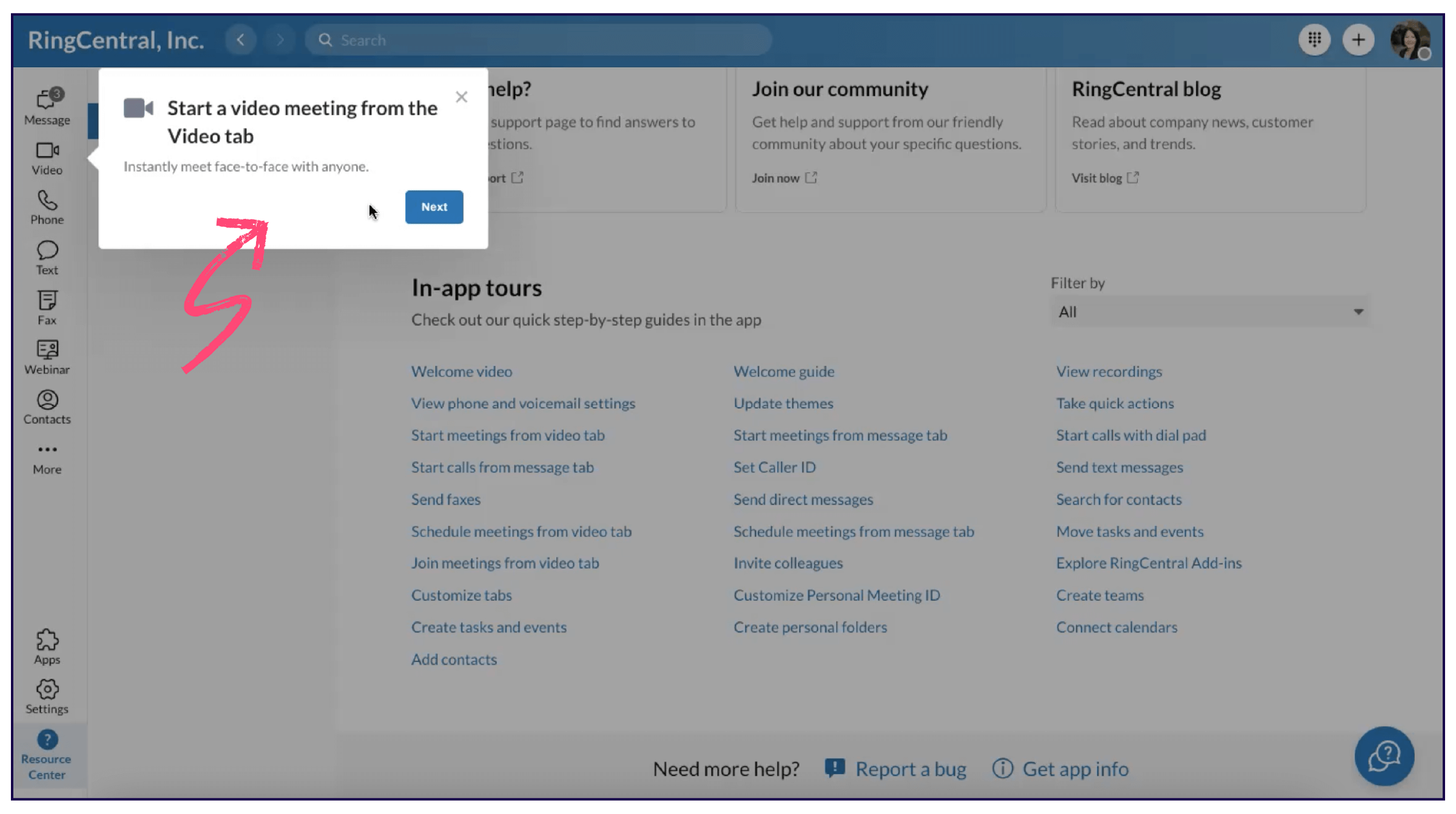In-app is the new email
For marketing teams that embrace product-led strategies, the product becomes the ultimate channel for driving adoption and retention. Pendo helps support these efforts every step of the way.
RingCentral’s marketing team was already leveraging Pendo to create welcome guides and tooltips that appeared when new users logged into the platform for the first time or if they hadn’t yet utilized certain features. The in-app guides highlighted key “sticky behavior” features that the team identified as correlating with long-term usage and retention.
After seeing success with these guides, RingCentral wanted to add an element of self service to the experience. “Having [the guides] show up automatically is great, but we also wanted to create some sort of inbox where users could go back and look at these in-app tours again on their own,” explained Jean Collings, director of lifecycle marketing at RingCentral.
Putting on-demand on the table
The RingCentral team decided to use the Resource Center in Pendo to create several modules that included their welcome guides, in-app tours, and videos. And this self-service strategy proved successful. “We noticed that users who interacted with the Resource Center had increased app retention over time compared to those who didn’t use the Resource Center,” said Collings.
RingCentral’s product team took notice of this success, and suggested they build a similar capability into their own product. Their resource center now houses support articles, a chatbot, search functionality, and all of their Pendo in-app walkthroughs. “Now, users have a place to go back to if they want to look at any of our in-app tours on their own time,” Collings noted.
RingCentral’s Pendo in-app guides exist in two key areas of their resource center. First, in the “Discover” area, where new features are highlighted on a monthly basis. Each feature spotlight links out to a guide with either a video, GIF, or full walkthrough within the app. And second, in the “Help” area, where users can find in-app tours for things they don’t know how to do or need a refresher on. For example, if users don’t know how to start meetings from the video tab, they can click into that tour for a guided walkthrough. Collings added, “What’s really good about this is I was able to create a deep link within the ‘Next’ button, so it’ll force users into the video tab and then continue the in-app tour as they walk through the steps.”

Whenever RingCentral creates guides in Pendo, they always establish a control group so they’re able to measure DAU/MAU product analytics with the pen, feature adoption, and retention. Collings shared, “99.9% of the time, we see an increase in those three metrics for users who see our guides versus the control group.”
RingCentral also found that users who access their resource center at least twice in one month have an increased app retention of 25%, compared to those who don’t use the resource center at all. “Clearly, the things that are in the resource center are helping users and really making an impact on their experience overall,” said Collings.
Another added bonus is that, with Pendo, the RingCentral team can track which in-app guides are being clicked on the most—potentially signaling the need for additional education or tweaks to the product itself. “It gives us the information and signals of what our users really care about, and allows us to create a better experience either using Pendo or through product development,” Collings added.



